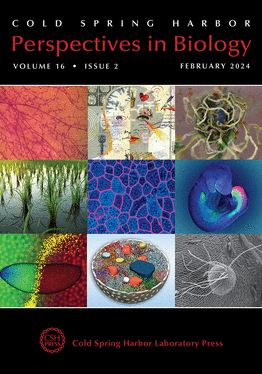胶质恶性肿瘤
IF 8.4
2区 生物学
Q1 CELL BIOLOGY
引用次数: 0
摘要
胶质瘤由多种相关肿瘤亚型组成,具有不同的生物学和分子特征及临床结果。随着详细遗传学和表观遗传学特征研究的进展,以及对与发育起源(包括大脑位置和患者年龄)相关的亚型的认识,胶质瘤分类已从过去依赖组织病理学特征转变为结合分子特征和时空发病率的最新分类。在一个亚型中,单个胶质瘤显示出细胞异质性,通常包含类似于不同类型正常胶质细胞和祖细胞的亚群。除了由基因突变和肿瘤细胞间信号传导驱动的肿瘤自主异常生长调节机制外,与肿瘤微环境(包括神经元、星形胶质细胞、少突胶质细胞前体细胞和免疫微环境)的相互作用在驱动胶质瘤生长和影响治疗反应方面发挥着重要作用。人们对正常脑部对胶质瘤生长的复杂作用的新认识为治疗的进步带来了新的机遇。本文章由计算机程序翻译,如有差异,请以英文原文为准。
Glial Malignancies
Gliomas comprise a diverse spectrum of related tumor subtypes with varying biological and molecular features and clinical outcomes. Advances in detailed genetic and epigenetic characterizations along with an appreciation that subtypes associated with developmental origins, including brain location and patient age, have shifted glioma classification from the historical reliance on histopathological features to updated categories incorporating molecular signatures and spatiotemporal incidence. Within a subtype, individual gliomas show cellular heterogeneity, generally containing subpopulations resembling different types of normal glial and progenitor cells. In addition to tumor-autonomous mechanisms of aberrant growth regulation driven by genetic mutations and signaling between tumor cells, interactions with the tumor microenvironment, including neurons, astrocytes, oligodendrocyte precursor cells, and the immune microenvironment play important roles in driving glioma growth and influencing response to treatment. The emerging understanding of the complex contributions of normal brain to glioma growth represents new opportunities for therapeutic advances.
求助全文
通过发布文献求助,成功后即可免费获取论文全文。
去求助
来源期刊

Cold Spring Harbor perspectives in biology
CELL BIOLOGY-
CiteScore
15.00
自引率
1.40%
发文量
56
审稿时长
3-8 weeks
期刊介绍:
Cold Spring Harbor Perspectives in Biology offers a comprehensive platform in the molecular life sciences, featuring reviews that span molecular, cell, and developmental biology, genetics, neuroscience, immunology, cancer biology, and molecular pathology. This online publication provides in-depth insights into various topics, making it a valuable resource for those engaged in diverse aspects of biological research.
 求助内容:
求助内容: 应助结果提醒方式:
应助结果提醒方式:


